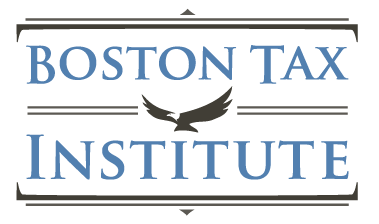Rule 97 of the Ferengi Rules of Acquisition – Enough is never enough – seems to be theme of the Year 15 struggle between aggregators and the not-for-profit(NFPs) sponsors of low income housing projects. “Year 15” is a reference to the way Section 42 of the Internal Revenue Code – Low-income housing credit – works.
Year 15
When a qualifying project is placed in service a ten year stream of credits goes to the owners if they comply with the requirements of maintaining affordability of the units. Then there is five years where the credits are subject to recapture. That’s how you get to 15.
There will generally be another 15 years of maintaining affordability required that will be enforced by state housing authorities, but there are ways around that. Having the property revert to ownership by a community based not-for-profit is one way to help assure that it will remain affordable. Deals were structured so that investor partners would get all their return from tax benefits with a view that they would not be getting anything on the back end.
The Dispute
There is a general sentiment that investors who paid for the tax credits and other benefits get out at year 15 without any further return particularly when the general partner is controlled by a not-for-profit sponsor. This prospect was explicitly enshrined in Section 42(i)(7) which indicates that a right of first refusal by a qualified not-for-profit (among others) will not cause a taxpayer to be denied any benefits with respect to a low-income building provided the minimum purchase price covers outstanding indebtedness and taxes associated with the sale(ROFR).
Lately holders of the investor interest in low-income housing projects have been resisting NFP sponsors trying to exercise ROFRs. The holders are generally not the original investors. The State of Washington Housing Finance Commission issued a report on the phenomenon in September 2019.
In recent years, however, some private firms have begun to systematically challenge nonprofits’ project-transfer rights and disrupt the normal exit process in hopes of selling the property at market value.
Last month I covered Tenants Dev, Corp V AMTAX Holdings 227, which is in effect a dispute between a Boston community development corporation (CDC) and the best know aggregator Alden Torch. Alden Torch provided a statement indicating that they are working to ensure that the “contractual obligations and entitlements of the parties are upheld and the requirements of the federal program are met.”
There is a pretty compelling case that having a not-for-profit sponsor take full control of the project at Year 15 is quite consistent with the intent of the program which is that the housing stay affordable in the future. Here are some of the key points.
Why Just The Tax Benefits Can Be Enough
Low-income housing is one of the few areas where tax sheltering is more or less explicitly blessed going back at least to the seventies. Code Section 183 – Activities not engage in for profit – has a broader reach than “hobby loss” and was used against tax shelters in the eighties, although not so much lately. Revenue Ruling 79-300 held that a low income housing project under Section 236 of the National Housing Act was not subject to Section 183 limitations. LTR 8531065 confirmed this for other sorts of low-income housing projects.
This exemption from Section 183 concerns was explicitly recognized in the regulations issued under Section 42. The preamble to the regulation contains language that aggregators, who posture as defenders of the integrity of the tax law, might find distressing:
Although no explicit reference is contained in section 42 or its legislative history regarding its interaction with section 183, the legislative history of the low-income housing credit indicates that Congress contemplated that tax benefits such as the credit and depreciation would be available to taxpayers investing in low-income housing, even though such an investment would not otherwise provide a potential for economic return. (Emphasis added)
That was in 1992. In 2021 in An Introduction to the Low-Income Housing Tax Credit for the Congressional Research Service, Mark Keightley wrote:
Typically, investors do not expect their equity investment in a project to produce income. Instead, investors look to the credits, which will be used to offset their income tax liabilities, as their return on investment. The return investors receive is determined in part by the market price of the tax credits.
From Sea To Shining Sea
As noted the Tenant’s Development case concerns property in Boston’s South End (which is not to be confused with South Boston). Homeowner’s Rehab Inc concerned a project in nearby Cambridge. In 2018 the Massachusetts Supreme Judicial Court approved a lower court ruling that it was just fine for the corporate general partner to solicit an offer that would trigger the exercise of the Section 42 ROFR. That project had been a HUD 236 project from the seventies that was resyndicated with the credit in 1997.
In Senior Housing Assistance Group in the state of Washington in 2019, things went the other ways, as the court ruled that a Section 42 ROFR could not be treated as if it were essentially an option. Nixon Peabody, which represents Alden Torch in the Tenant’s Development case issued a celebratory memo about the decision.
While the court’s decision is fact-intensive, it iterates the principle that, in order for a Section 42(i)(7) ROFR to be properly triggered, it must also comply with applicable state common law requirements.
State of Washington housing authorities responded by disqualifying investors who bring these sorts of lawsuits from being involved in new projects. The counter move to that is a lawsuit filed in November 2020 by two Amtax Holdings entities and Alden Torch against the Washington State Housing Finance Commission in the US District Court of the Western District of Washington claiming that the agency acted outside of its authority on behalf of local special interests.
Brandon Duong is a recent article in Shelterforce describes Year 15 disputes involving Opa-Locka CDC in Florida and Downtown Action to Save Housing in Bellevue, Washington. Opa-Locka’s 2020 win in federal district court is encouraging to the NFP sponsors. There are other cases. Riseboro Community Partnership Inc was a loss to the sponsor in the United States District Court of the Eastern District of New York.
The Takeaway
It is a struggle to tell this story to people who have not spent time inside the Section 42 bubble. I am intimately familiar with the history and even prehistory of the issue as I worked on affordable deals sponsored by NFPs even prior to the enactment of Section 42. Joseph B Cohan and Associates got into the field because we had a lot of dentists as clients.
I have a chaotic good alignment but a certain appreciation for villainy. In the eighties, I feared that in the future the villains would take over the community development corporations that would be enriched by the deals. Some of them seemed vulnerable to shenanigans. It did not occur to me that the dried husks of limited partnership interests from which all the tax benefits had been squeezed could have new life breathed into them by clever legal work. Of course the older deals based on deductions fueled by nonrecourse debt became toxic after they burned out.
The first Section 42 deal I did the tax compliance work on was referred to as a “Partnership” not only because it was literally a partnership for tax purposes, but also because it was also a metaphor for federal, state and local government working with the business community and community based NFPs to support affordable housing. It actually worked pretty well, as far as I could tell. However, sometimes it seems that these sort of partnerships can bring out the worst in each sector.
The low-income housing tax credit does seem to be a fiendishly complex way to support affordable housing, but it is what we have and there does not seem to be a better solution on the horizon. The problem of the aggregators seems to defy a simple solution. They have a strong, if not compelling, legal argument that a ROFR is not the same thing as an option and the ability to outspend weaker NFPs. You have to be a Ferengi to admire what they are doing, but as is noted in Rule 284 – Deep down, everyone’s a Ferengi.
Recent Coverage
A Primer on Federal Affordable Housing & Community Development Programs by the National Low Income Housing Coalition includes a discussion of the aggregator problem in Section 5-25 page 243.
After The Low Income Housing Tax Credits Are Done, Investors Want More on Forbes.com.
Losing Nonprofit Control of Tax Credit Housing? by Brandon Duong on Shelterforce.
On the Tax Policy Center’s Briefing Book – What is the Low-Income Housing Tax Credit and how does it work? – there is a summary discussion of other problems with the credit program, but no mention of the aggregators.
Critics of the LIHTC argue that the federal subsidy per unit of new construction is higher than it needs to be because of the various intermediaries involved in its financing—organizers, syndicators, general partners, managers, and investors—each of whom are compensated for their efforts. As a result, a significant part of the federal tax subsidy does not go directly into the creation of new rental housing stock. Critics also identify the complexity of the statute and regulations as another potential shortcoming. Another downside is that some state housing finance authorities tend to approve LIHTC projects in ways that concentrate low-income communities where they have historically been segregated and where economic opportunities may be limited. Finally, while the LIHTC may help construct new affordable housing, maintaining that affordability is challenging once the required compliance periods are over.
—————————————————————————————————————————————————————–
Originally published on Forbes.com.
For great value continuing professional education. I recommend the Boston Tax Institute

You can register on-line or reach them by phone (561) 268 – 2269 or email vc@bostontaxinstitute.com. Mention Your Tax Matters Partner if you contact them.
































































































Trackbacks/Pingbacks